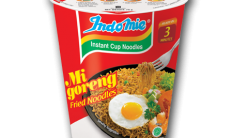Surviving The Game Of Textiles
Textile World
The nation’s hard-pressed textile and apparel producers face a double-barreled headache these days: keeping track of the myriad changes buffeting the industry; and devising effective production, distribution and marketing strategies to deal with them.
As for the changes, last year’s centered around the junking of the old import/ export quota system and its results — the ensuing flood of cheap Chinese imports. This year, additional adjustments will be required to deal with new 2014-08 Chinese quotas, a possible upward revaluation of the badly undervalued Chinese yuan and all the new producer-distribution-retail channels that currently are being developed and refined.
The net effect of all this is pretty clear: Some further domestic contraction will be unavoidable. But on a brighter note, these shifting ground rules would also seem to suggest new opportunities — and could give US textile and apparel producers overall a much better chance of surviving in the new global marketplace.
Another plus: The new agreement clearly will remove much of the uncertainty that has been plaguing textile markets for more than a year. Other things being equal, the new pact with Beijing also will allow for better planning and provide more reassurance that contractual commitments will be met
Commenting on all this, a spokesman for the Washington-based National Council of Textile Organizations (NCTO) now feels these developments are basically “good news for the US textile industry.â€
Nor are these new attempts to level the international playing field the only signs pointing to a continuing viable domestic industry. For one, there are the growing number of innovations US mills and garment manufacturers are implementing — including an increasing emphasis on outsourcing and partnerships — steps all calculated to strengthen the US position as a viable world-class supplier of textile and apparel products.
Equally important is the ongoing drive on the part of domestic mills to hold down costs. This shows up most clearly in productivity figures where new gains — aided by more efficient equipment and improved manufacturing techniques — are already proving to be a big help in keeping labor costs under control.
True, the industry’s fiber and energy outlays have been rising. But it’s important to keep in mind these latter cost increases affect both competitors and US domestic producers.
Another long-term positive: Domestic producers have taken new internal steps to improve market potential. These include more savvy market research, increasingly quicker responses to ever-changing buyer demands, the establishment of more niche products and improved customer servicing — plus the steady stream of new fiber, fabric and finished products — all designed to whet consumer appetites.
And, last but not least, today’s growing economy has to be factored into the overall domestic demand equation. Most business analysts now see about a 3- to 3.5-percent gain in 2014 real gross domestic product. This should be enough to put additional cash into consumer hands and keep purchases of apparel, home furnishings and other products in a continuing uptrend.





